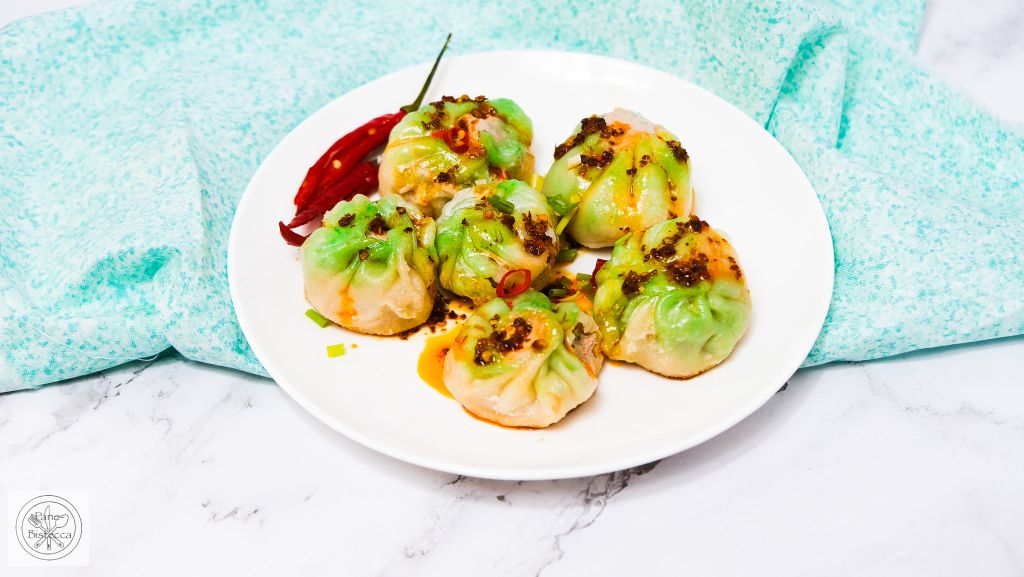
Chinese Dumplings – Sheng Jian Boa
Pane-Bistecca
Sheng Jian Boa – Chinese Dumplings, are different from Potstickers. Their wrappers are made with a yeast dough and that is why they grow when you cook them. They are also not like the Char Siu Boa, or Gua Bao, but very similar. Mine are two-colored, because I wanted to serve up several dumplings and they shouldn’t just differ in shape.
Sheng Jian Bao means raw, fried buns from Shanghai. Raw here means that they are not steamed, before frying, but fried and crisped and only steamed at the end. This allows the dough to grow. In Shanghai, these dumplings are served for breakfast.
This recipe takes part in the Culinary World travel from Volkermampft which is looking for dumplings from all over the world in April.
Sheng Jian Bao means raw, fried buns from Shanghai. Raw here means that they are not steamed, before frying, but fried and crisped and only steamed at the end. This allows the dough to grow. In Shanghai, these dumplings are served for breakfast.
This recipe takes part in the Culinary World travel from Volkermampft which is looking for dumplings from all over the world in April.
Ingredients
For the Ginger Water:
-
-
2 tbsp grated Ginger
-
30 ml hot Water
-
Dough:
-
-
250 g Flour
-
50 g Cornstarch
-
5 g dried Yeast
-
1 tsp Sugar
-
150 ml warm Water
-
1 tbsp Oil (not Sesame Oil!)
-
Filling:
-
250 g minced Pork (not lean, or the filling will be dry!)
-
2 tsp Soy Sauce
-
2 tsp Rice Wine Vinegar
-
¼ tsp Sugar
-
½ tsp Salt
-
¼ tsp Pepper
-
¼ tsp Chili Powder
-
1 tbsp Sesame Oil
-
3 spring-onion, chopped
Instructions
1
Step 1
Mix the ingredients for the ginger water together and set aside.
2
Step 2
For the dough mix flour, cornstarch, dry yeast and sugar. Then slowly add the warm water and oil while the food processor kneads. Then knead together properly by hand until a homogeneous dough is formed. It should be soft and elastic. Cover the dough and let it rise for 1 hour.
3
Step 3
For the filling knead the meat with the soy sauce, sugar, salt, pepper, chili powder and the ginger water until the meat has absorbed all the liquid. Then mix in the sesame oil and the chopped scallions. Cover and store in the refrigerator until ready to use.
4
Step 4
After the dough has risen, cut off 1/3 of it and if desired, mix in 2-3 drops of food coloring or natural coloring, such as spinach. Knead well. Knead the white dough well again. Form the white dough into a roll that is a good finger thickness. Roll out the colored dough as long as the white roll and roll it out, about 8-10 cm wide. Place the white roll on top and roll up. Cover with a cloth and let rest again for 10 minutes.
5
Step 5
Dann fingerdicke Scheiben abschneiden und diese einzeln ausrollen. Die Rolle aber weiterhin unter dem Tuch lassen! Die Scheiben werden wie folgt ausgerollt. Scheibe mit der Handfläche platt drücken, dann mit einem Nudelholz den Rand der Scheibe nach aussen rollen, die Scheibe 90 Grad drehen, nach aussen rollen, drehen, nach aussen rollen. So bleibt die Mitte des Teiges dicker und damit verhindert das, dass das Fleisch den Teig zu stark aufweicht. Die ausgerollte Scheibe sollte etwa 10-12 cm Durchmesser haben.
6
Step 6
1 Esslöffel der Füllung in die Mitte geben und irgendwo auf der rechten Seite (wenn du Rechtshänder bist) den Teig zusammen klemmen. Nun in flüssigen Bewegungen immer wieder 1 Falte oben gegen rechts kneifen, so fortlaufend weiterfahren, bis man rundherum den Anfang wieder trifft. Den Teig zum Angang kneifen, so dass ein kleines Loch bleibt. (siehe Bild)
7
Step 7
Let the finished dumplings rest under the cloth for about 15 minutes.
8
Step 8
Heat some oil in a shallow pan and put the dumplings in. Reduce heat slightly and fry until the bottom is slightly crispy. (about 3-5 minutes) Now add enough hot water so that the buns are 1/3 in the water. Put the lid on and let it cook for 3-4 minutes. Then remove from heat and wait another 2 minutes before serving.
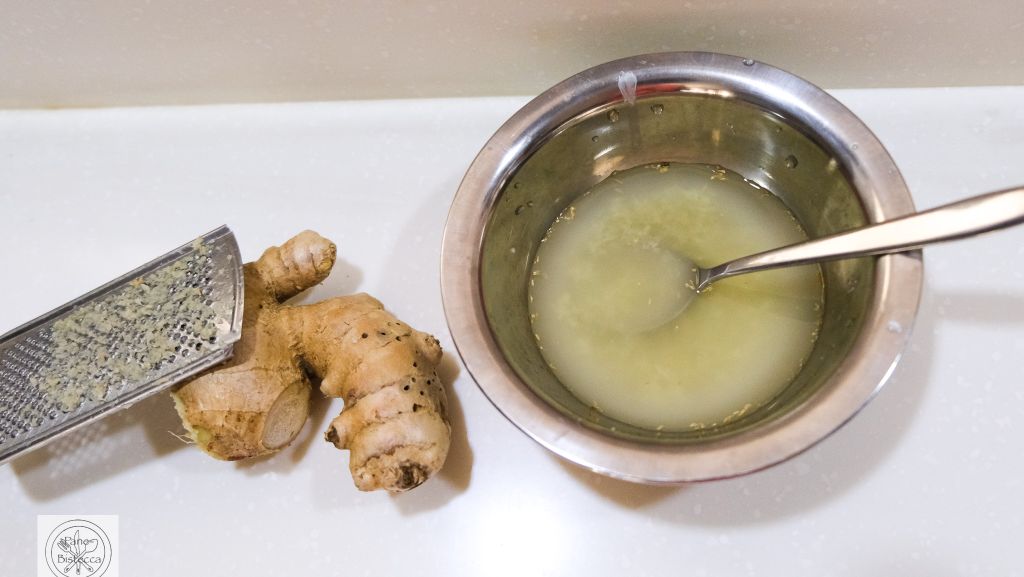
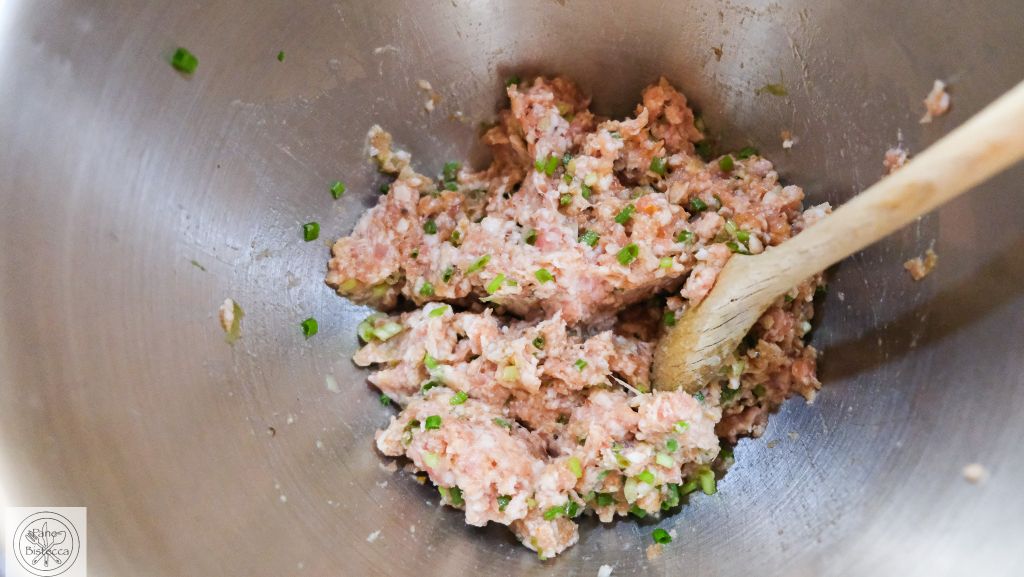
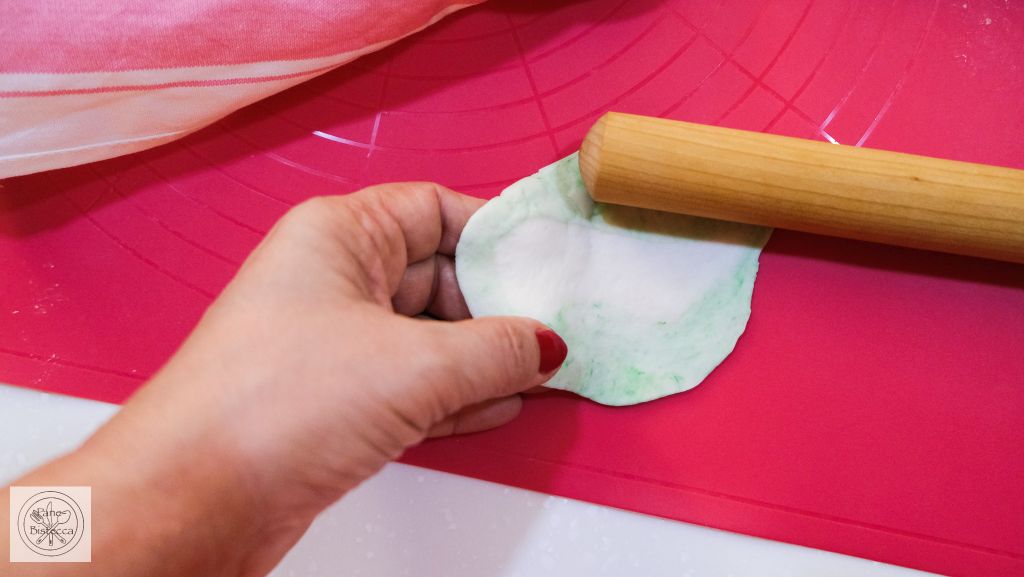

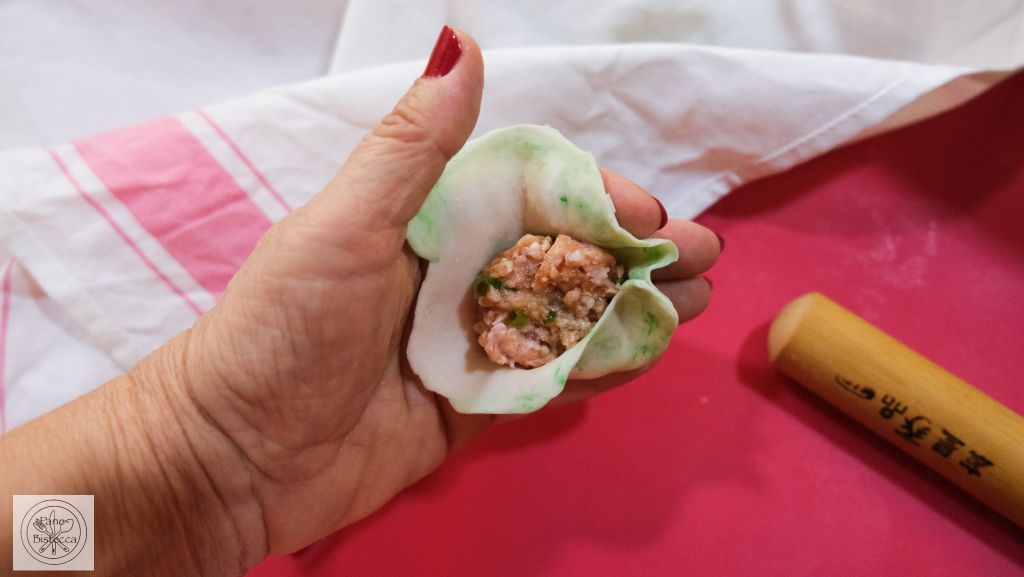
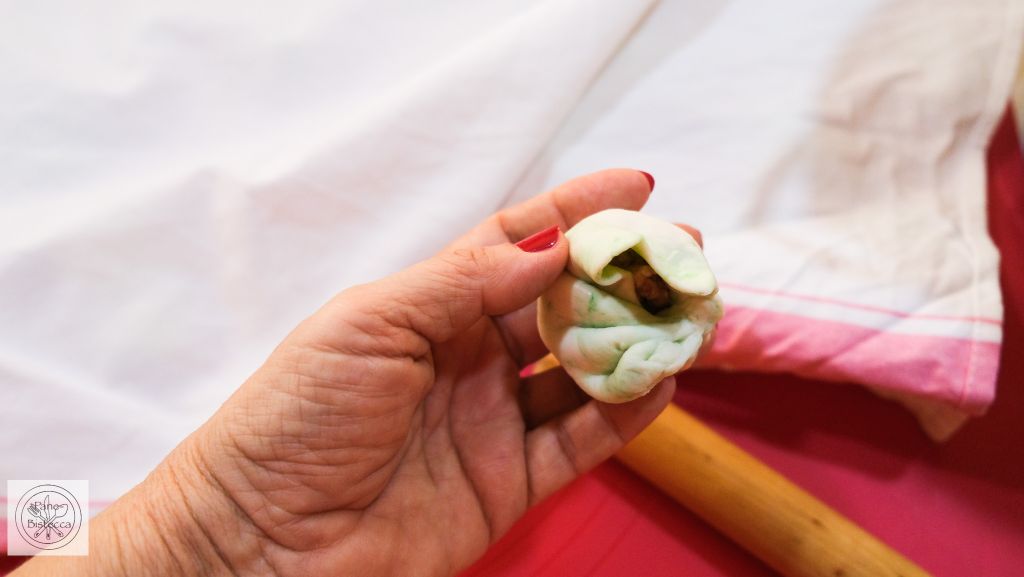
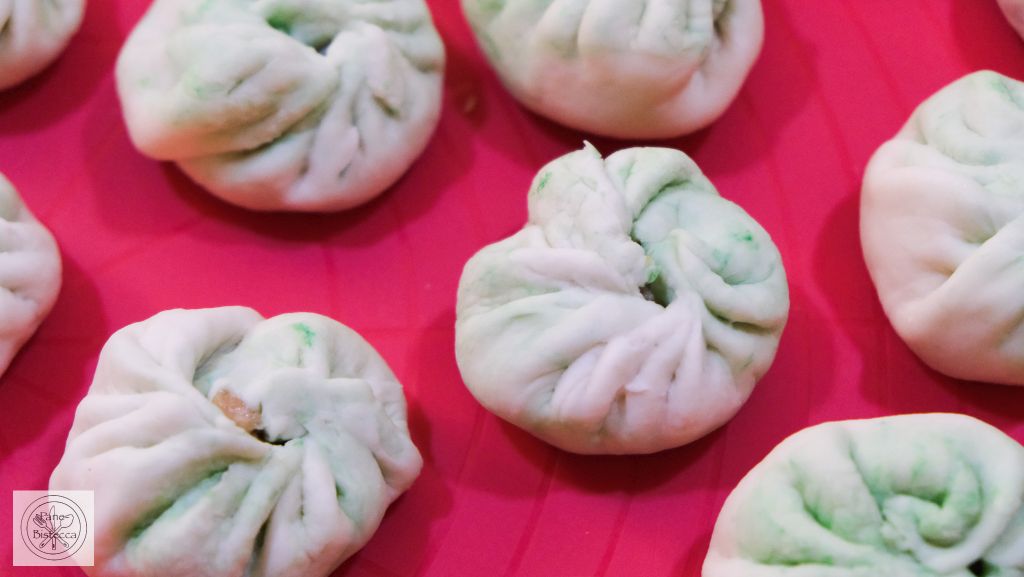
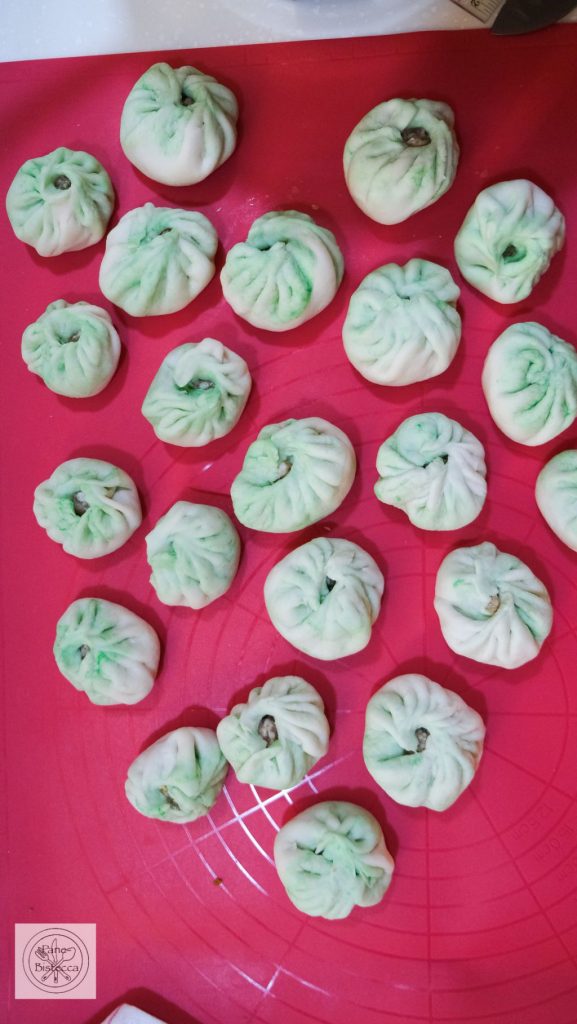
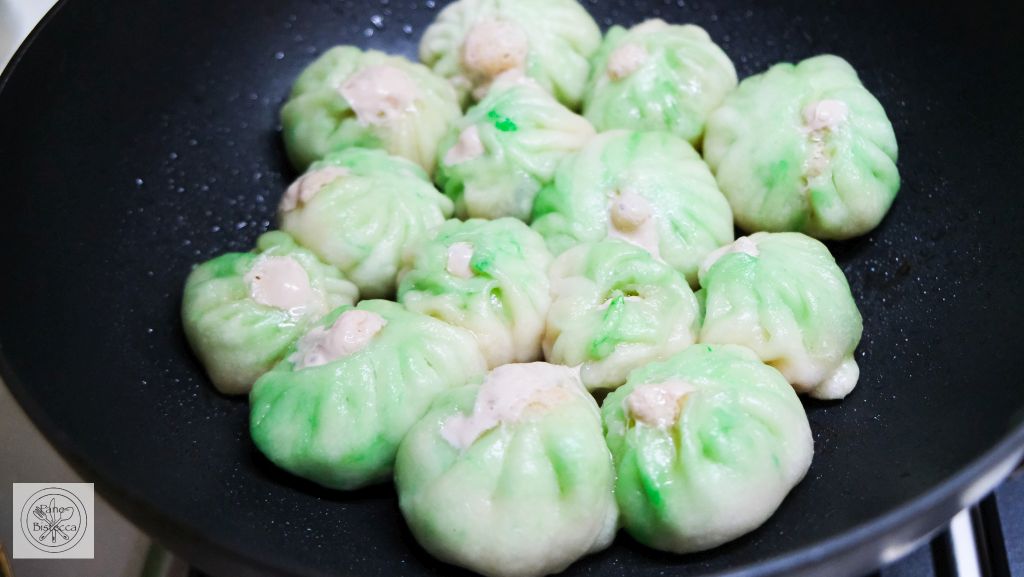
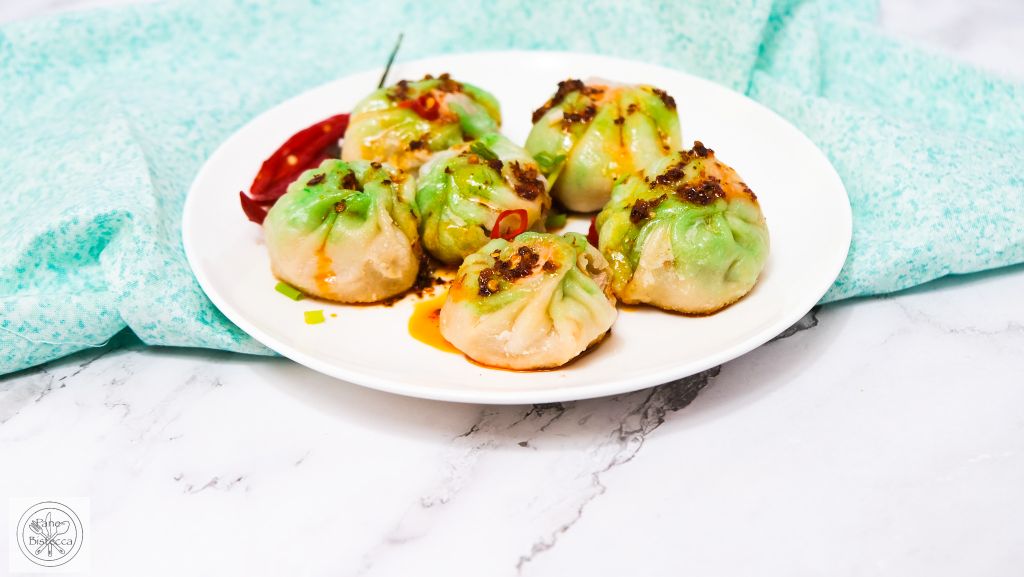
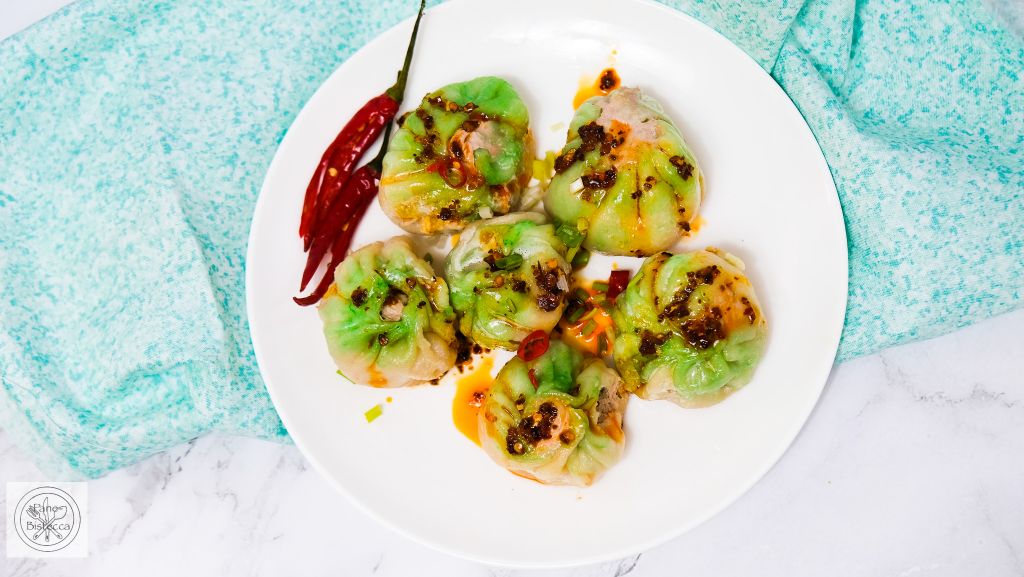

- Petra aka Cascabel von Chili und Ciabatta mit Empanadas de morocho aus Ecuador
- Wilma von Pane-Bistecca mit Usbekische Manti und Sheng Jian Bao und Zwei verschieden gefuellte Ravioli
- Sandra von Tracks and the City mit Toasted Ravioli aus St. Louis
- Friederike von Fliederbaum mit „Lammnudel“ – Teigtaschen mit Lamm wie in Kärnten
- Susannne von magentratzerl mit Sambose Mash und Teigtäschchen mit Myzithra (Kalitsounia me myzithra)
- Gabi von USA kulinarisch mit Knishes aus New York
- Jenny von Jenny is baking mit Empanadas mit Quittenpaste und Käse aus Mittelamerika
- Michael von SalzigSüssLecker mit Vegetarischen Empanadas – einfach köstliche Teigtaschen
- Regina von bistroglobal mit Schwäbische Maultaschen und Cassone Romagnolo
- Anja von GoOnTravel mit Herzhafte Piroggen: Ein Klassiker der polnischen Küche
- Edyta von mein-dolcevita mit Teigtaschen aus Karelien
- Susan von Labsalliebe mit Reshteh Khoshkar – Glutenfreie süße Teigtaschen رشته خوشکار
- Sonja von fluffig & hart mit Jjin Mandu – koreanische Teigtaschen
- Simone von zimtkringel mit Cheese & Onion Pasties
- Kathrina von Küchentraum & Purzelbaum mit Vegane Mandu mit Kimchi-Füllung
- Britta von Brittas Kochbuch mit Pizza Calzone oder die größte Teigtasche der Welt (Italien) und Bolani aus Afghanistan und Kartoffeltaschen mit Frischkäsefüllung (Deutschland)
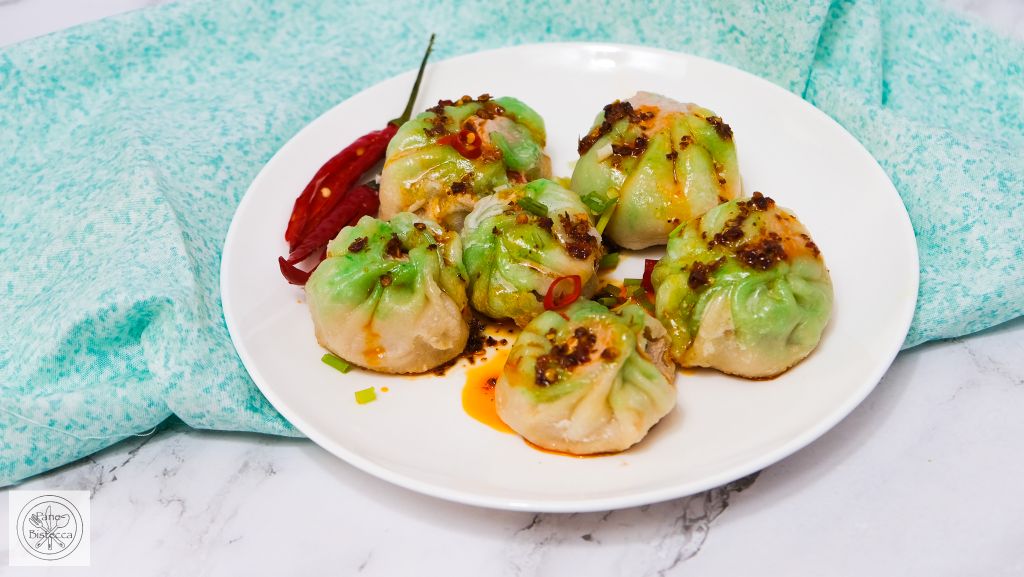





![Validate my RSS feed [Valid RSS]](https://pane-bistecca.com/wp-content/uploads/2024/05/valid-rss-rogers.png)